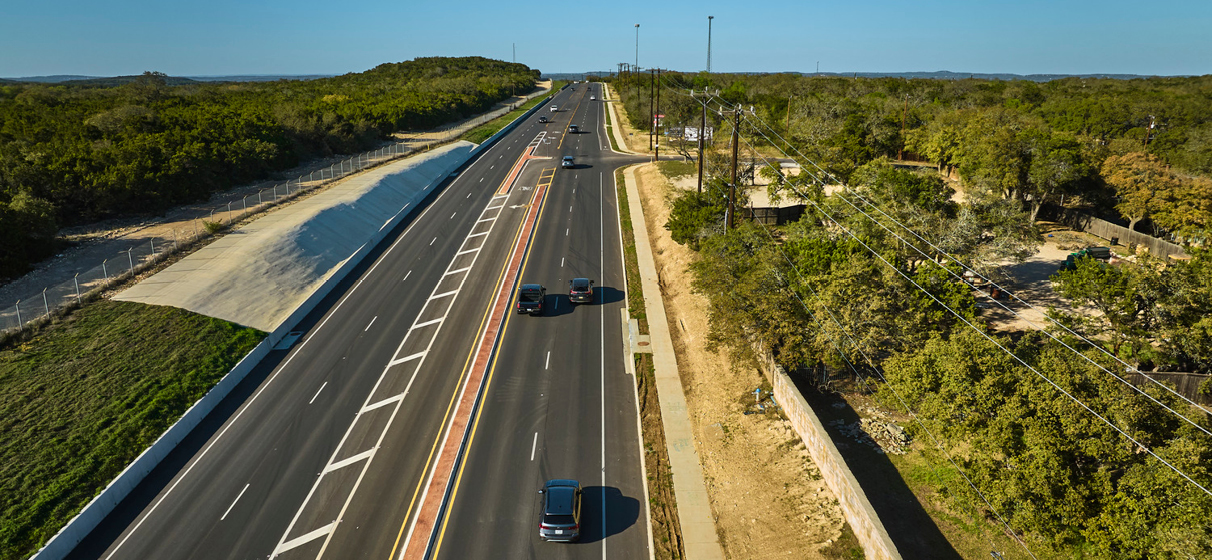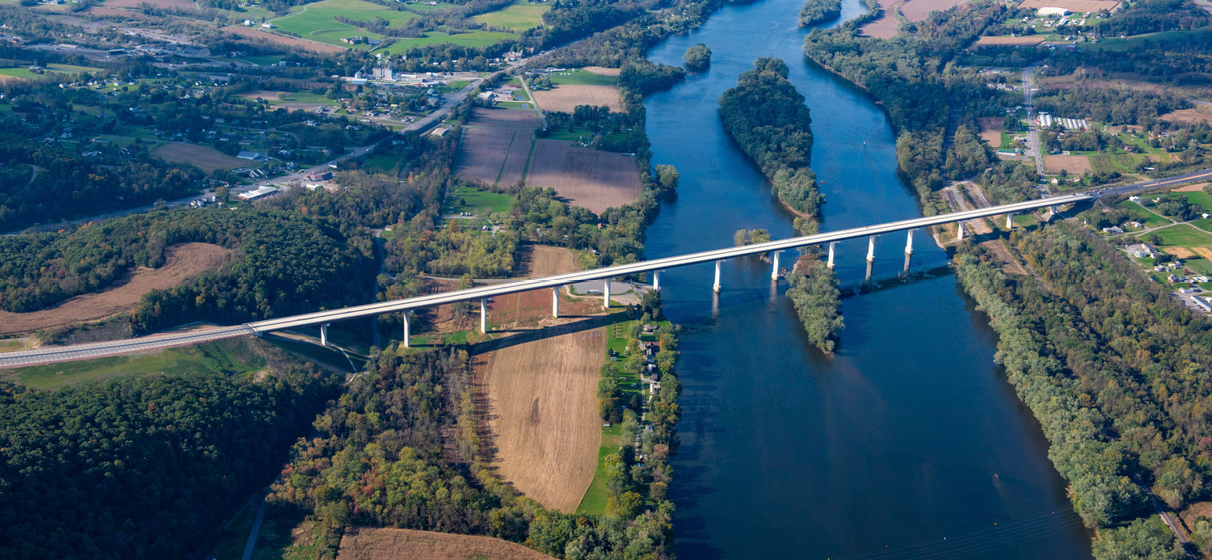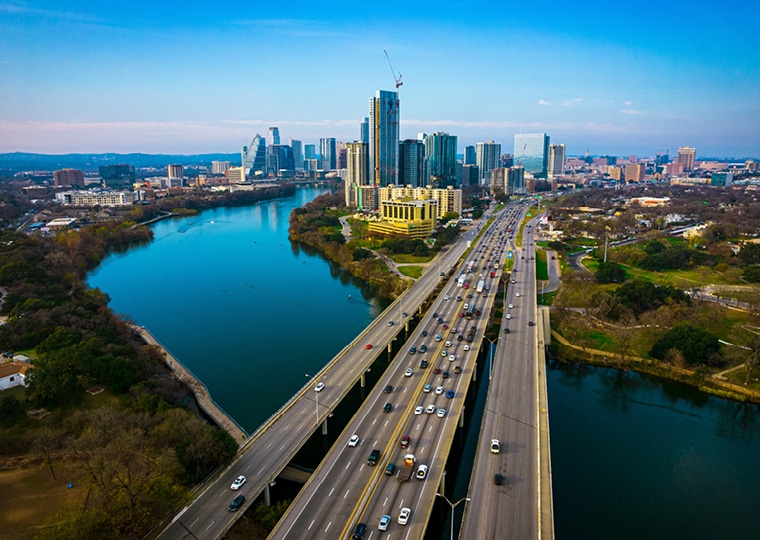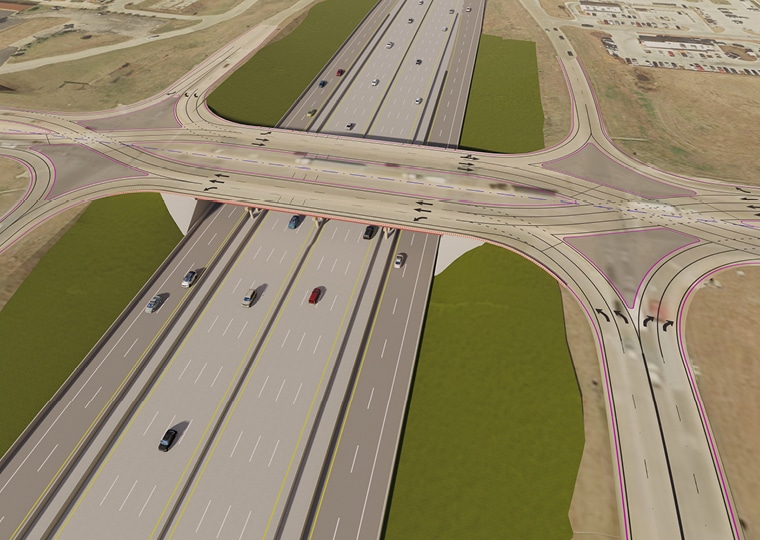The state of Texas continues to grow at an exponential rate, recently surpassing more than 30 million residents, and growing more than any other U.S. state in the past year according to the recent estimates from the U.S. Census Bureau.
As the state looks to improve and expand its transportation network to meet this growth, the impact of noise pollution on surrounding communities – from construction itself to subsequent highway traffic – presents a significant challenge.
To address these challenges, our team has expertise in performing noise studies during construction planning. In this roundtable, STV’s Bryan Jarjoura, senior traffic noise engineering specialist, and Audrey Stephens, environmental engineering specialist, discuss the lasting impact of noise studies on our communities.
How and when is a noise study conducted?
Bryan Jarjoura: Whenever a client plans for a new highway, or any modification to an existing one, that sets the wheels in motion for a noise study. First, we determine the existing levels of noise to establish a baseline. This includes noise from tires, engines, and exhaust, and excludes temporary noise such as sirens or construction. From there, we build a Traffic Noise Model (TNM) to predict noise levels at other locations based on terrain changes, existing traffic and roadway updates. Per the Federal Highway Administration (FHWA) and the respective state’s Department of Transportation (DOT), we look at noise-sensitive areas such as residential backyards; nearby trails and parks; hotel pools, interior of places of worship, etc. From there, we can predict future noise levels by applying the new design and the projected changes in traffic for the next 20 years.
Audrey Stephens: While each state’s DOT has its own guidelines on noise barriers and modifications, there are federal policies for mitigating noise pollution above certain decibels depending on the project scope. We look at each sensitive area individually to determine our recommendation for mitigation, weighing cost-effectiveness, feasibility, and community impact.
What type of solutions do you recommend that abate noise pollution?
Audrey Stephens: Noise walls are usually the best option to combat noise pollution affecting existing residences or businesses. Our reports can also recommend guidance for future construction, such as building future residences further from a new highway or creating a buffer to absorb the sound between the highway and other structures like a berm or small hill.
Bryan Jarjoura: When we present the recommendations from our noise study, the options are presented to local residents for a vote. Each state has guidelines for a “YES” votes for the noise wall to be built. Sometimes, a noise wall is recommended to be acoustically feasible and cost-effective, but the residents benefiting from the wall vote by a “NO” majority. In this case, the wall will not be built.
Audrey Stephens: An example of this is the highway our team is designing for the expansion if I-35 in Austin. Once completed, the increased traffic from adding two lanes in each direction will likely require significant noise mitigation. There have been several opportunities for the community to contribute to design considerations.
What kind of changes are you seeing in the way noise pollution is addressed?
Bryan Jarjoura: Sometimes, existing noise levels can exceed the recommended threshold. That’s why when we conduct a noise study near vacant land, we provide contour lines that recommend the placement of any structure a certain number of feet from the new highway. But for highways that were built decades ago, those guidelines weren’t yet in place. It’s important to be mindful of not just the current impacts of the noise, but potential future impacts.
Audrey Stephens: To that point, a recent study examined noise inequality in neighborhoods that are home to historically disadvantaged groups. More often than not, these neighborhoods have louder, and more noise in communities that were redlined in the early 1900s.
What can environmental engineers do to improve the level of noise pollution in our communities?
Bryan Jarjoura: In addition to ensuring the accuracy of the reports themselves, we must impress upon local community members that noise pollution is just that: pollution. It requires the same kind of remediation as air pollution and can have adverse effects on our health. Because these are our communities too, we want to provide the best solutions possible for residents and clients with noise workshops and public meetings.
Audrey Stephens: And while most DOTs don’t require it, our project teams are supported by the latest TNM software. It has more capabilities to conduct validation studies that cross-check our findings for accuracy withing 0.5 decibels. We can go so far as to generate contours of undeveloped land parcels and measure proposed conditions in addition to current ones. It’s a great service to provide for each state to provide proposed value for any future builders.
Bryan Jarjoura: These studies serve as the compass guiding project teams toward sustainable and mindful growth. With this knowledge, our clients and communities are able to make informed decisions that can positively benefit residents for generations.







